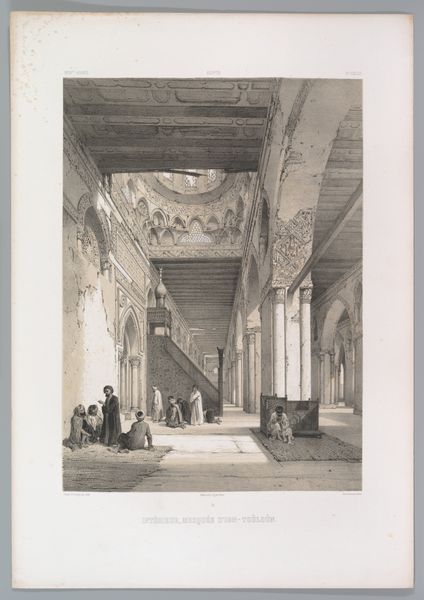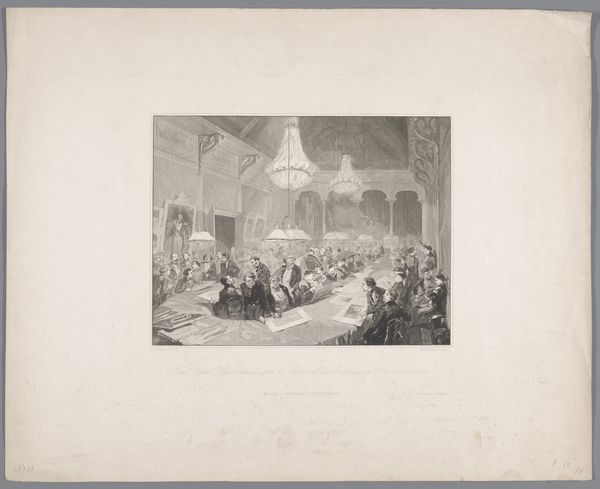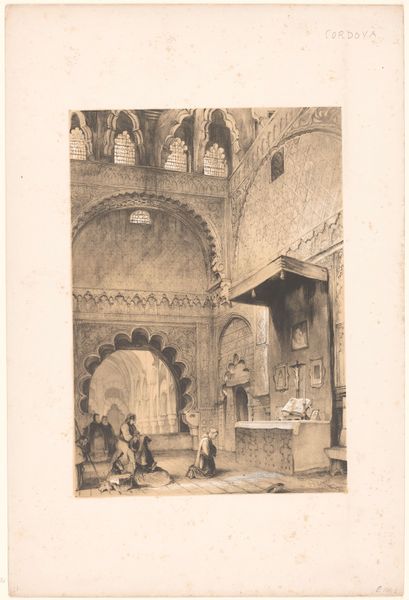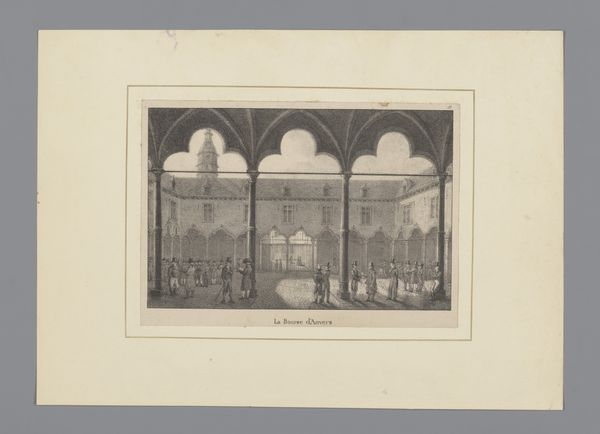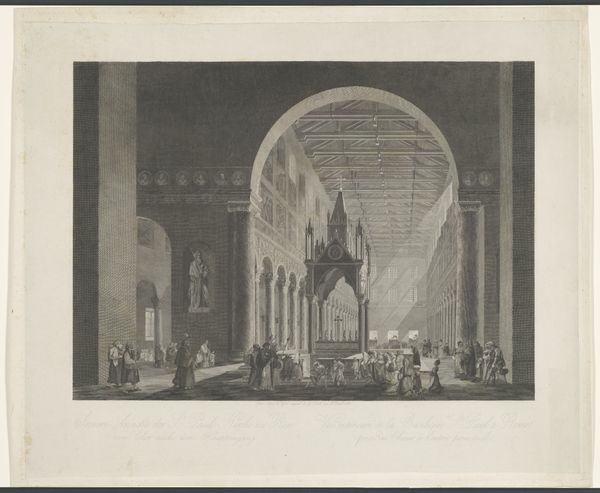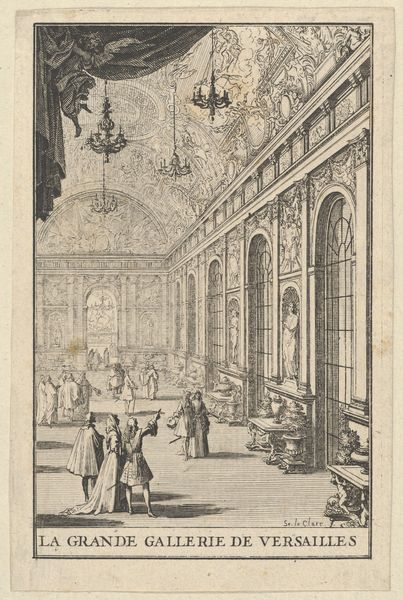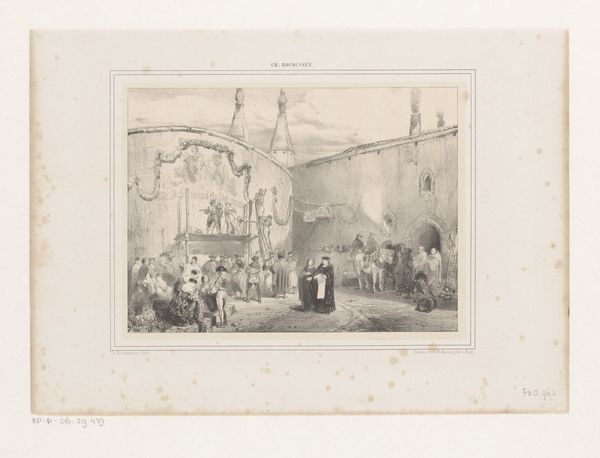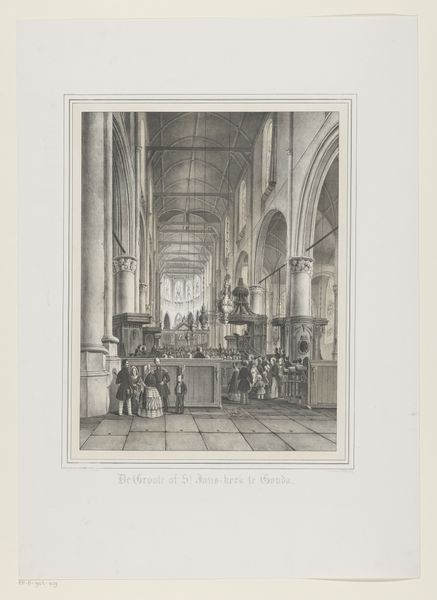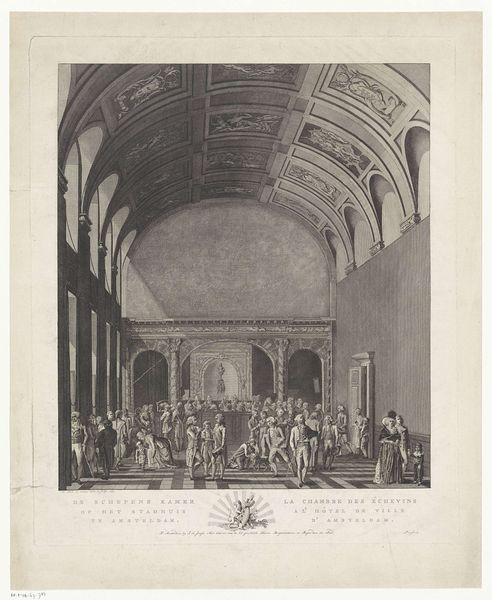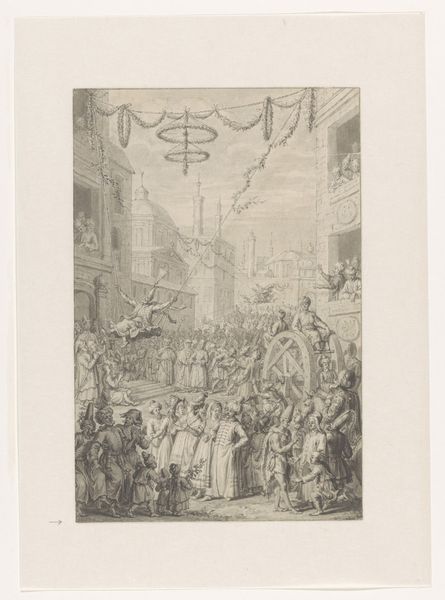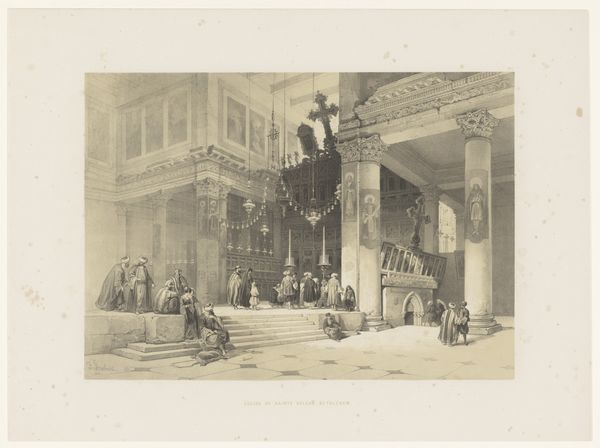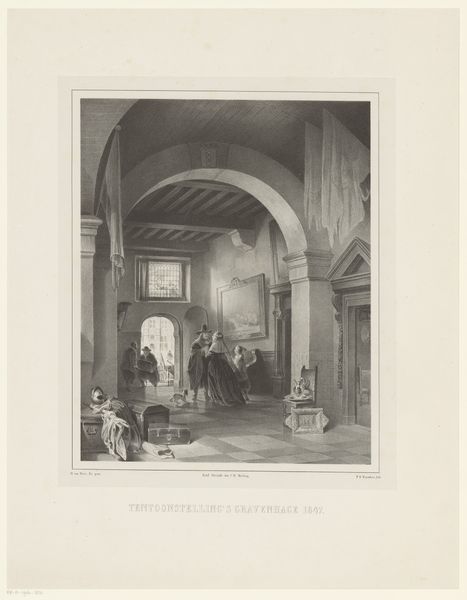
drawing, print, paper, ink, engraving, architecture
#
drawing
#
medieval
# print
#
old engraving style
#
landscape
#
paper
#
ink
#
islamic-art
#
engraving
#
architecture
Dimensions: height 529 mm, width 395 mm
Copyright: Rijks Museum: Open Domain
Editor: Here we have François Stroobant’s "Tabernacle in the Church of the Holy Sepulchre in Jerusalem," created in 1852, using drawing, print, engraving, ink and paper. The perspective is striking; the architectural details are rendered with such precision. I am wondering, what is your view of this artwork, and what elements particularly draw your attention? Curator: The careful articulation of space, defined by the interplay of light and shadow, is compelling. Notice how the artist employs linear perspective not just to depict depth but to structure the entire composition. The vaulted ceiling, punctuated by the oculus, creates a powerful vertical axis, which is then stabilized by the horizontal expanse of the tabernacle itself. Consider the engraving style, which allows for fine details, almost drawing the eye towards the intricate details of the architecture. Editor: So you’re focusing on how the lines and forms create the structure? It feels very calculated. Does the rendering technique play a large part in how we read the image? Curator: Absolutely. The artist is in full control of the image, utilizing the technique to direct our focus. Observe how the contrast in shading emphasizes certain architectural features and figures, creating a visual hierarchy. The regularity of the architecture is counter-balanced by the people populating the sacred space; note the various groupings. It establishes an interplay between the timeless and the temporal, the architectural and the human. Editor: That makes sense. It's not just a depiction, it's a carefully structured statement about space and form. It encourages closer inspection of its details. Curator: Precisely. The visual language, when carefully unpacked, unveils a complex articulation of spatial and formal relationships, transcending mere representational accuracy. We begin to discern the structural bones of the drawing, allowing us to experience it on more than just a visual level.
Comments
No comments
Be the first to comment and join the conversation on the ultimate creative platform.

